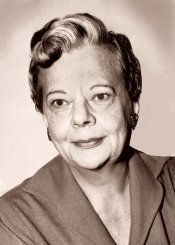It Started With the Adobe.
The Leonis Adobe is one of the oldest surviving residences in the San Fernando Valley. Prior to its transformation into the Leonis family home, it was an abandoned adobe structure dating back to 1844. Little is known about the history of its origins.
During the 1870s, Miguel and Espiritu Leonis moved into the home you see today. Miguel continued to utilize adobe brick, a common building material during the period, and refashioned the old adobe relic into a customary two-story dwelling with a wrap-around veranda and Victorian elements, known today as the California Monterey Style. Several years later, he fully enclosed the rear and northeast portions of the veranda in order to build more interior spaces on both floors. Presumably chosen by Leonis, the original colors of the house were discovered under many layers of paint.
The Leonis Adobe with an addition.
Today, family portraits still hang in their original spots in the living room. Discovered in pieces and restored, the large living room mirror next to the front door previously hung where the dining room doors are now, which were a 1920s addition. The present-day living room was originally two distinct rooms: a Victorian parlor and a sitting room.
Much of the original property was sold over time and only a small portion remains today. In fact, the existing barn, built in 1912, was moved twice to accommodate the 101 Freeway.
“The King of Calabasas”.
Standing six-feet-four-inches tall and referred to as the “King of Calabasas,” wealthy French Basque rancho owner Miguel Leonis (1822-1889) is one the most colorful figures in 19th century Los Angeles. Unable to read and write but gifted with shrewd business acumen, Leonis was relentless in land acquisition, acquiring over 18,000 acres across southern California. His real estate portfolio included parcels in downtown Los Angeles, Santa Monica, West Hollywood, Elizabeth Lake, and Santa Barbara, prime real estate today.
Born in Cambo les Bains, a Basque province in southwest France, Leonis arrived in Los Angeles in 1854, part of the wave of French-speaking immigrants—many from the Basque Country—who settled in the area starting in the mid-1800s. He quickly found work in the San Fernando Valley as a sheep herder, ultimately becoming foreman at Rancho El Escorpion—present day West Hills and Woodland Hills. Leonis met his wife on El Escorpion in 1859. Completely against Basque tradition, his wife, Espiritu was a Chumash/Gabrielino-Tongva Native American.
In 1889, Miguel Leonis died in a wagon accident while traveling to downtown Los Angeles over the Cahuenga Pass. Despite a 30-year common-law marriage to Espiritu, Leonis willed the majority of his fortune to relatives in France.
Espiritu Chijulla.
Espiritu Chijulla (1836-1906), a widowed Chumash/Gabrielino-Tongva Native American, was living on Rancho El Escorpion with her son Juan when she met and began a relationship Miguel Leonis. Espiritu’s father, Odon, along with her brother-in-law, Urbano, and nephew, Manuel, were the three original recipients of Rancho El Escorpion, a Mexican land grant awarded to the three Native Americans in 1845. In the early 1870s, Leonis ultimately acquired total possession of El Escorpion, propelling his fabled career as a land baron.
Miguel and Espiritu ultimately relocated to Calabasas and made today’s Leonis Adobe their permanent home in 1878. They had one daughter, Marcelina Leonis (1860-1880), who died at the age of twenty.
Leonis allocated a small sum to his common-law wife of 30 years in his will. After his death, Espiritu took the highly unusual step of challenging Leonis’ estate and sued for a wife’s share. After a prolonged sixteen-year battle, she won her case. As a Spanish-speaking Native American woman in the 19th century with no citizenship or legal rights, Espiritu’s legal victory was a groundbreaking feat for the time.
Espiritu died a mere seven months after her pioneering court case. However, she never had to leave the adobe home she shared with Miguel Leonis and lived comfortably with her son, Juan Menendez, until her death in 1906.
Saving the Adobe.
Albert Raborn Phillips was born in Los Angeles in 1920. Mr. Phillips graduated from UCLA with a degree in Business Administration in 1941. Always interested in historic preservation, "Ray" had become President of the Heritage Square Museum in Pasadena, Ca.
Ray read that Kay Beachy was sponsoring a luncheon for anyone interested in saving the Leonis Adobe. Curious, he responded. Finding kindred spirits committed to historic preservation, he enthusiastically joined the Board.
Kathleen Smith Beachy was born in Webster City, Iowa on Aug 9th, 1906. In 1960 Kay was contacted about a developer who was making plans to build a shopping center on the exact spot where the 1844 Leonis Adobe stood. By January of 1961, a successful campaign to save the adobe was gaining momentum. Plans to have the city or county convert the land to a park failed. They turned to the state, hoping to have the land turned into a state roadside inn. That also failed, but Kay did not give up.
With the help of Carl Dentzel, Director of the Southwest Museum, they formed the Cultural Heritage Board. The Board's first meeting was on August 6, 1962. It was a landmark event and a pressure-packed, memorable day. The first five Historic-Cultural Monuments declared were sites that were all considered threatened to some extent. Within three hours, the Leonis Adobe was designated as the city's first Historic-Cultural Monument. Immediately upon the Board's designation, a stop work order was issued to stay the demolition of the Leonis Adobe for 360 days.
Kay then purchased the land on which the adobe stood for $240,000 and formed the Leonis Adobe Association to hold ownership of the Adobe with her attorney as President. Kay then gave the Leonis Adobe Association a check for an additional $40,000 to make sure the Adobe would be safe and eventually restored. When her attorney stepped down shortly afterwards, Ray became President of the Association in 1964, a position that he held for the next forty years.
In 1967, Mr. and Mrs. Pedro Orsua came to be resident caretakers of the Adobe. Mrs. Orsua had been raised from childhood by Espiritu Leonis as a member of the family. She and three orphan girls shared the small upstairs room that is now the bathroom. Her memories as to how the Adobe appeared when Espiritu and Miguel were alive were used by Ray to authentically restore and furnish the Adobe.
Kay Beachy died on October 21st, 1974. She had just been appointed to the Cultural Heritage Board.
Ray continued to serve the Museum as its President Emeritus and to advise the board on the vital role of accurate restoration in historic preservation until his passing in May 2017.
Albert Raborn Phillips
Kathleen Smith Beachy
Ray & Kay on the veranda, 1960s
Ray & Kay during Adobe restorations
The Adobe in disrepair, 1915
A New Addition.
Plummer House, present day
Until it was moved to the Leonis Adobe grounds in 1983, the Plummer House stood in Plummer Park in West Hollywood where it was known as "the oldest house in Hollywood." It belonged to sea Captain John Cornelius Plummer, his wife Maria Cecilia and their two sons John (Juan) and Eugene (Eugenio).
The Plummer family and the Leonis family were acquaintances. In "Senor Plummer - The Life and Laughter of an Old Californian" Eugenio recounted how Espiritu Leonis would visit the Plummer family in Hollywood, where they played Spanish whist and reminisced about the old days. Espiritu's son Juan Menendez also wrote in his journal about visits between the families.
As time went on, much of the land owned by the family had been gradually sold. Los Angeles County acquired the property for a public park, and gave Eugenio permission to live there for the remainder of his life. After Eugenio's death, the Plummer House was used by the Audubon Society to house their library and exhibits until 1980, when vandals set fire to the rear portion of the house.
The City of Los Angeles was going to demolish the structure, but the Leonis Adobe Association made arrangements with Los Angeles County in 1983 to move the house to the Leonis Adobe property. The remaining portion of the Plummer House was restored and now serves as the visitor center and gift shop for the Leonis Adobe. The Plummer House is also registered as State Historical Landmark No. 160.
Plummer House, 1983











